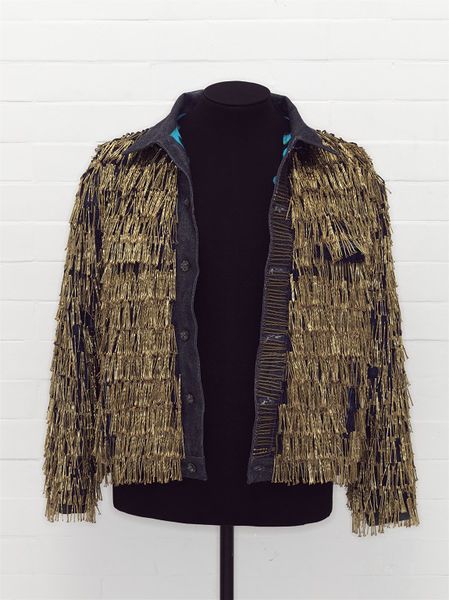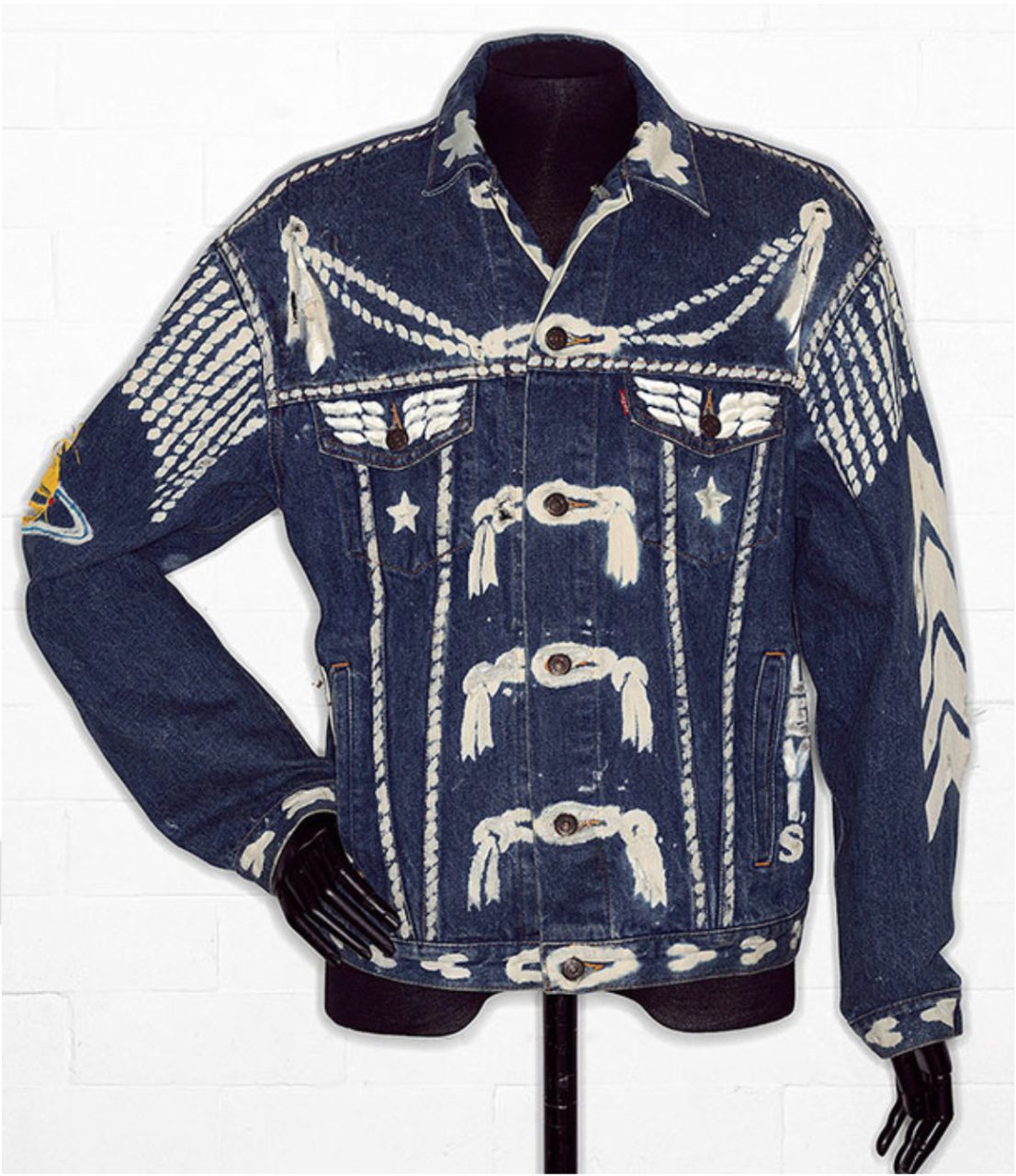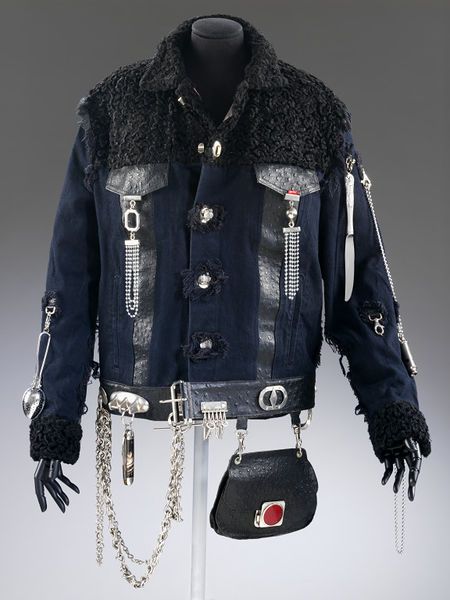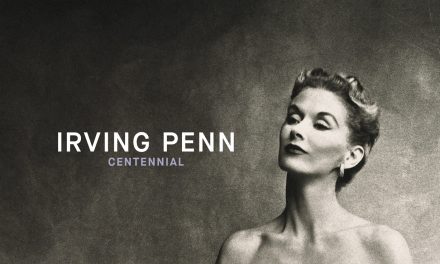This ensemble was created by Nicola Bowery out of repurposed Gap denim jacket and Levi’s jeans. During the 1970s and 1980s, Punks and New Romantics would repurpose garments to breathe more personality and creativity into them to show their individuality.
About the Look
N icola’s creation is a re-purposed Gap Jacket and blue denim Levis that has been embellished with pailettes and beads. According to the Museum at FIT:
“This ensemble was crafted by Nicola Bowery, wife of Leigh Bowery, for John Joseph Lyndon (a.k.a Johnny Rotten) to wear to the first Love Ball AIDS benefit in 1989 (Fig. 1), an event characterized by the fantastical fashions worn by many of the guests. This ensemble was made entirely from repurposed garments. It highlights an approach to clothing in general as a medium of personal expression that proliferated in street style and club culture of the 1980s.”
Nicola Bowery helped create other garments, but nothing specifically recorded (Atlas). Both Nicola and Leigh were associated with the New Romantics and the club scene in London. During the 1980s the New Romantics style was at its peak. The New Romanticism movement was all about gender blurring (Fig. 1). People were beginning to become disillusioned by Punk rock with many believing it lost its appeal. This new movement confronted gender and sexuality, which allowed for the application of sequins more commonly associated with womenswear to this masculine denim ensemble.
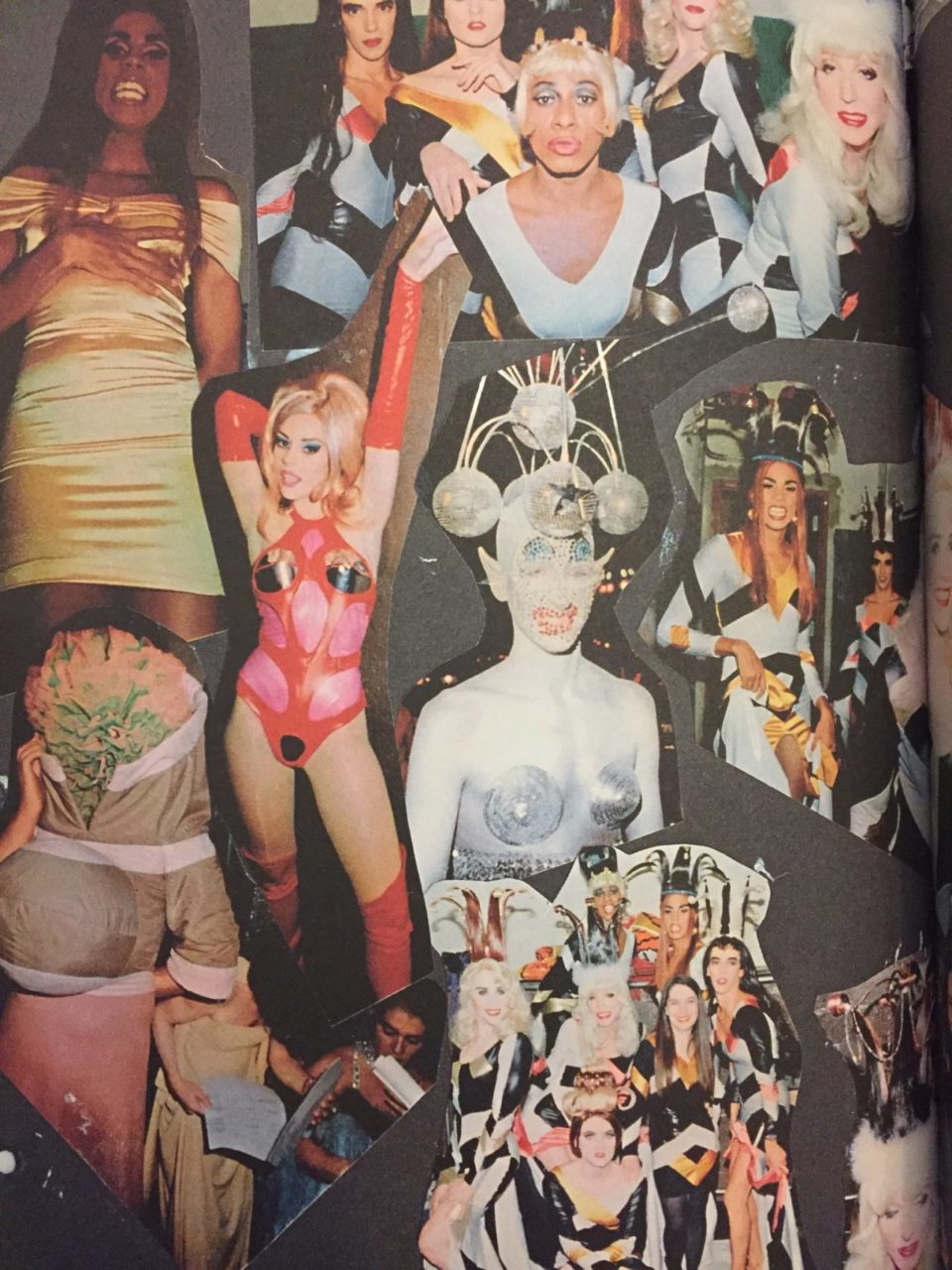
Fig. 1 - Artist unknown. Photos from the 1989 Love Ball, 1989. Source: What We Wore: A People's History of British Style (128)
Nicola Bowery, Ensemble, 1989. Repurposed The GAP jacket & Levis jeans blue denim, palettes, beads. New York: The Museum at FIT, 2012 19.1. Gift of Freddie Leiba. Source: The Museum at FIT
About the Context
Another example of re-purposed denim is in the V&A’s collection; created by Leigh Bowery, this Levis’ denim jacket is decorated with hair, brass, and plastic (Fig. 2). Both are perfect examples of how immensely personal denim had become. According to the Men’s Fashion Reader:
“A pair of jeans became intensely personal. If a small hole developed it might be left alone as a ‘badge’ of experience or great deliberation might go into the choice of an appropriate fabric with which to cover it. Soon, counter youth glorifying their jeans-decorating and embellishing them, making them colourful and celebratory, and making them into visible vocal, vocal personal statements. Silk, velvet, leather, feathers, bells, beads, rivets, sequins, paint- anything that could be applied to denim fabric was applied to someone’s jeans, jeans jackets and related accessories. Men who never learned to sew and who under most circumstances would think of embroidery as unmanly learned the necessary stitches to work on their own clothes. The unisex garment the symbolized the alternative youth culture was an appropriate vehicle for the breakdown of gender roles, and besides, one’s jeans were too personal to trust anyone else.” (Karaminas & McNeil 334)
Figure 1 is one of 22 jackets from the denim jacket project from the 1989 issue of Blitz magazine. Carey Labovitch started the magazine Blitz in 1979 because she felt that there weren’t any magazines around she wanted to read (Club to Catwalk). The magazine would focus on a range of topics from fashion, music, art, design, theater, movies, politics and photography. In 1986 Ian R. Webb, a photographer for the magazine came up with what would become known as The Designer Denim Project.
The idea was to take the iconic classic masculine denim jacket and give 22 of the top international and up-and-coming designers free range to transform the jacket into something new (Club to Catwalk). Jackets were given to Katharine Hamnett, BodyMap, Jasper Conran, Hermes, John Galliano, Stephen Jones, Jean Muir, Zandra Rhodes, Paul Smith, Vivienne Westwood (Fig. 3), Leigh Bowery (Fig. 2) just to name a few (Fig. 4).
Once the issue came to press, with the help of the Princess Trust, the jackets went on display at the V&A museum and then traveled to the Louvre, then to the Musée des Arts Décoratifs, then Stockholm, Australia, and finally Barney’s in New York (Labovitch). After which, they were auctioned off.
Fig. 2 - Leigh Bowery (Australian, 1961-). Customized denim jacket 'BLITZ' by Levi Strauss & Co., 1986. Denim and hair, brass, plastic; 65 x 55 cm. London: Victoria & Albert Museum, T.525-1997. Given by Carey Labovitch and Simon Tesler. Source: V & A
Fig. 3 - Vivienne Westwood (British, 1941-). Blue denim Levi-Strauss jacket with detachable back panel, 1986. Denim; circumference: 91.5 cm. London: Victoria & Albert Museum, T.200:1-2002. Purchased with the assistance of The Art Fund, the Friends of the V&A, the Elsbeth Evans Trust, and the Dorothy Hughes Bequest. Source: V & A
Fig. 4 - Stephen Linard (British, 1959-). Black denim jacket customised with cutlery, leather and astrakhan, 1986. Denim with cutlery, leather and astrakhan. London: Victoria & Albert Museum, T.530-1997. Given by Carey Labovitch and Simon Tesler. Source: V & A
Its Afterlife
The ensemble was recently displayed during The Museum at FIT’s exhibit “Denim: Fashion’s Frontier” (Fig. 5). The ensemble was a gift from Freddie Leiba and was worn by John Joseph Lyndon (a.k.a Johnny Rotten) to the first Love Ball in New York City at the (now closed) Rosalind Ballroom in 1989.
The New York Times wrote of the Love Ball:
“The evening had all the elements that make New York City night life remarkable: beauty, pageantry, celebrity and gender confusion. Leading figures from the fashion industry were on hand to sponsor, perform or judge in perhaps the biggest public display to date of ‘vogueing,’ a campy, stylized version of runway modeling that has flourished for decades in Harlem and more recently in downtown nightclubs.” (Hochswender)
Fig. 5 - Installation view. "Denim: Fashion's Frontier". Source: Museum at FIT
About the Designer

Fig. 6 - Screencap. The Legend of Leigh Bowery, 2004. Atlas Films. Source: Author
Nicola Bowery (Nicole Bateman) (Fig. 6) was the wife of artist/designer/performer Leigh Bowery. Nicola said “I loved Leigh he was my best friend. Our marriage was another one of his performances” (Atlas, 53min). Friend and biographer Sue Tilley described Nicola as being pretty and poised: “She is now a mother of two living with her new partner in Brighton” (The Guardian). Today Nicola manages Leigh’s estate (Atlas).
References:
- Atlas, Charles, George Boy, Nicola Bowery, Rosie O’Donnell, Leigh Bowery, Films (Firm) Atlas, Pictures Palm, and Gate Home Entertainment Lions. The Legend of Leigh Bowery. Videorecording. Palm Pictures : Distributed by Lions Gate Entertainment, 2004. http://www.worldcat.org/oclc/963430456.
- “Denim: Fashion’s Frontier.” Accessed January 8, 2018. http://exhibitions.fitnyc.edu/denim-fashions-frontier/.
- Ellen, Barbara. “Leigh Bowery, Ideal Husband.” The Observer, July 21, 2002, sec. From the Observer. http://www.theguardian.com/theobserver/2002/jul/21/features.review27.
- Hochswender, Woody. “Vogueing Against AIDS: A Quest for ‘Overness’.” New York Times (1923-Current File), May 12, 1989. https://libproxy.fitsuny.edu:2818/docview/110301234?accountid=27253.
- Manandhar, Nina, Eve Dawoud, and Ted Polhemus. What We Wore: A People’s History of British Style. Munich: Prestel Verlag, 2014. http://www.worldcat.org/oclc/892303253.
- McNeil, Peter, and Vicki Karaminas, eds. The Men’s Fashion Reader. Oxford: Berg, 2009. http://www.worldcat.org/oclc/892521813.
- Victoria and Albert Museum. “Club to Catwalk: About the Exhibition,” September 26, 2013. http://www.vam.ac.uk/content/exhibitions/exhibition-from-club-to-catwalk-london-fashion-in-the-80s/about-the-exhibition/.
- “What Made Leigh Bowery so Legendary?” Time Out London. Accessed January 8, 2018. https://www.timeout.com/london/nightlife/what-made-leigh-bowery-so-legendary.



